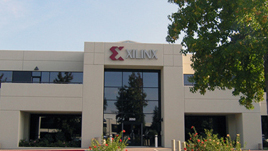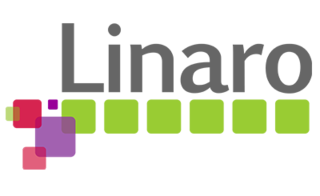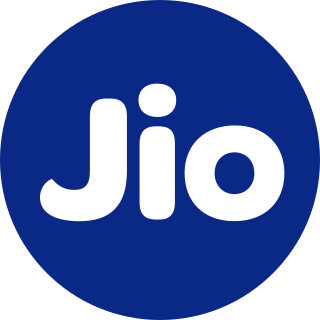Related Research Articles

Bell Mobility Inc. is a Canadian wireless network operator and the division of Bell Canada which offers wireless services across Canada. It operates networks using LTE and HSPA+ on its mainstream networks. Bell Mobility is the third-largest wireless carrier in Canada, with 10.1 million subscribers as of Q3 2020.
Verizon is an American wireless network operator that previously operated as a separate division of Verizon Communications under the name Verizon Wireless. In a 2019 reorganization, Verizon moved the wireless products and services into the divisions Verizon Consumer and Verizon Business, and stopped using the Verizon Wireless name. Verizon is the second-largest wireless carrier in the United States, with 143.3 million subscribers at the end of Q2 2023.

Xilinx, Inc. was an American technology and semiconductor company that primarily supplied programmable logic devices. The company is known for inventing the first commercially viable field-programmable gate array (FPGA) and creating the first fabless manufacturing model.
Wind River Systems, also known as Wind River, is an Alameda, California–based company, subsidiary of Aptiv PLC. The company develops embedded system and cloud software consisting of real-time operating systems software, industry-specific software, simulation technology, development tools and middleware.
Saskatchewan Telecommunications Holding Corporation, operating as SaskTel, is a Canadian crown-owned telecommunications firm based in the province of Saskatchewan. Owned by the provincial government, it provides wireline and wireless communications services, including landline telephone, mobile networks, broadband internet, IPTV, and security services. Through a subsidiary, SaskTel International, the company has also worked on telecom infrastructure projects in countries such as Argentina and the Bahamas, as well as being the lead implementation company for the communication and control systems of the Channel Tunnel between England and France.

KT Corporation, formerly Korea Telecom, is a South Korean telecommunications company. KT is the second-largest wireless carrier in South Korea, with 16.493 million subscribers as of Q4 2017.

Oracle VM VirtualBox is a type-2 hypervisor for x86 virtualization developed by Oracle Corporation. VirtualBox was originally created by InnoTek Systemberatung GmbH, which was acquired by Sun Microsystems in 2008, which was in turn acquired by Oracle in 2010.

Boingo Wireless is an American company that designs, builds and manages wireless networks. Its public and private networks include distributed antenna systems (DAS), small cells, macro towers and more than one million Wi-Fi hotspots around the world. The company operates networks for airports, transit stations, stadiums, military bases, hospitals and commercial properties. In December 2022, the company announced it was moving its headquarters to Frisco, Texas, and would maintain regional offices in Los Angeles, New York, Chicago and Las Vegas. The company was listed on the Nasdaq until it was acquired by investment firm Digital Colony Management LLC in 2021.

In telecommunications, 5G is the fifth-generation technology standard for cellular networks, which cellular phone companies began deploying worldwide in 2019, and is the successor to 4G technology that provides connectivity to most current mobile phones.

Linaro is an engineering organization that works on free and open-source software such as the Linux kernel, the GNU Compiler Collection (GCC), QEMU, power management, graphics and multimedia interfaces for the ARM family of instruction sets and implementations thereof as well as for the Heterogeneous System Architecture (HSA). The company provides a collaborative engineering forum for companies to share engineering resources and funding to solve common problems on ARM software. In addition to Linaro's collaborative engineering forum, Linaro also works with companies on a one-to-one basis through its Services division.
Hexagon is the brand name for a family of digital signal processor (DSP) products by Qualcomm. Hexagon is also known as QDSP6, standing for “sixth generation digital signal processor.” According to Qualcomm, the Hexagon architecture is designed to deliver performance with low power over a variety of applications.

Redmi is a subsidiary company owned by the Chinese electronics company Xiaomi. It was first announced in July 2013 as a budget smartphone line, and became a separate sub-brand of Xiaomi in 2019 with entry-level and mid-range devices, while Xiaomi itself produces upper-range and flagship Xiaomi phones. Redmi phones use Xiaomi's MIUI user interface on top of Android. Models are divided into the entry-level Redmi, the mid-range Redmi Note, and the high-end Redmi K. The unrelated Mi A Android One series is positioned in the same market segment as Redmi devices, despite being part of the upper-range Xiaomi Mi lineup. The most significant difference from other Xiaomi smartphones is that Redmi uses less expensive components, allowing lower prices while retaining good specifications. In August 2014, The Wall Street Journal reported that in the second quarter of the 2014 fiscal year, Xiaomi had a market share of 14% of the China smartphone market; Redmi sales were attributed as a contributing factor toward this ranking.

Reliance Jio Infocomm Limited, doing business as Jio, is an Indian telecommunications company and a subsidiary of Jio Platforms, headquartered in Navi Mumbai, Maharashtra. It operates a national LTE network with coverage across all 22 telecom circles. Jio offers 4G and 4G+ services all over India and 5G service in many cities. Its 6G service is in the works.

Ting Mobile is an American mobile virtual network operator owned by Dish Wireless. Originally established in February 2012 by Tucows, Ting provides cellular service in the United States using the T-Mobile and Verizon networks. The service is sold off-contract with billing that adjusts the cost of service based on actual customer usage.
FreedomFi is a company for cellular networking.
References
- ↑ Pozza, Matteo; Rao, Ashwin; Flinck, Hannu; Tarkoma, Sasu (2018). "Network-In-a-Box: A Survey About On-Demand Flexible Networks". IEEE Communications Surveys and Tutorials . 20 (3): 2407–2428. doi:10.1109/COMST.2018.2807125. hdl: 10138/240925 . ISSN 1553-877X. S2CID 52116541.
- ↑ "Definition of network in a box". PCMAG. Retrieved 2022-02-15.
- ↑ Yu, Eileen. "Singtel unveils 5G network 'in a box' to run on-site customer trials". ZDNet. Retrieved 2022-03-08.
- ↑ Sharpe, Sharpe (2021-08-27). "5G iCore Network-in-a-Box launched by Tecore in the US". 5Gradar . Retrieved 2022-03-08.
- ↑ Gallagher, Sean (2014-02-28). "Cellular's open source future is latched to tallest tree in the village". Ars Technica . Retrieved 2022-03-08.